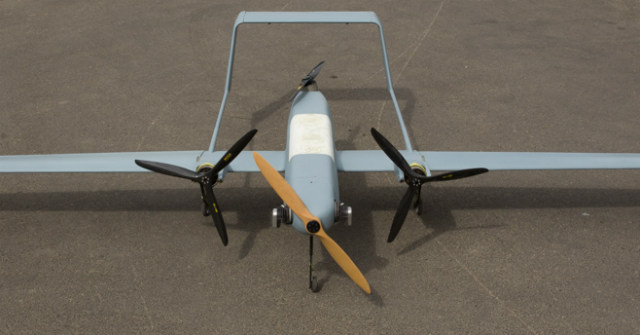Hankuk Carbon of South Korea and Israel Aerospace Industries (IAI) have demonstrated a hybrid version of the latter’s Panther unmanned air vehicle, under a joint venture the two companies signed in 2015.
The vertical take-off and landing UAV demonstration was held at the Gyeryongdae emergency landing strip in South Chungcheong province on 14 December.
The Panther was damaged during landing, and the cause of this will be investigated ahead of the companies resuming testing. Pre-flight tests did not highlight any problems.
A pure-electric Panther is available, equipped with three electric motors. The version used for the demonstration was the Front Engine Panther (FE Panther), a 67kg (147lb)-class tactical VTOL UAV, which has a petrol/electric hybrid propulsion system.
According to IAI, the hybrid propulsion system increases the UAV’s endurance and payload by providing two different power sources, which are optimised for vertical take-off and landing and cruise conditions.
During vertical takeoffs and landings, the UAV is powered by electric batteries operating the three motors. While cruising, the petrol engine is used.

Israel Aerospace Industries
The hybrid version demonstrated in South Korea has, according to sources, proved that this power design is the optimal one and will be capable of having an 8h endurance.
The current version of the Panther is 2.9m (9.5ft) long with an 8m wing, and has a maximum take-off weight of 67kg (147lb). It can carry an 8.5kg payload and has a maximum speed of 130 km/h (70kt). The maximum communication range is 60km.
The two companies plan to establish a joint venture to commercialise developed technologies, taking a step further than the partnership in research and development.
They also aim to develop new markets in other countries, including in the Middle East.
South Korean sources told FlightGlobal that another series of test flights is scheduled soon, and when the proof of concept is completed, the two companies intend to offer the design to meet future South Korean needs in advanced UAVs.
Source: FlightGlobal.com






















